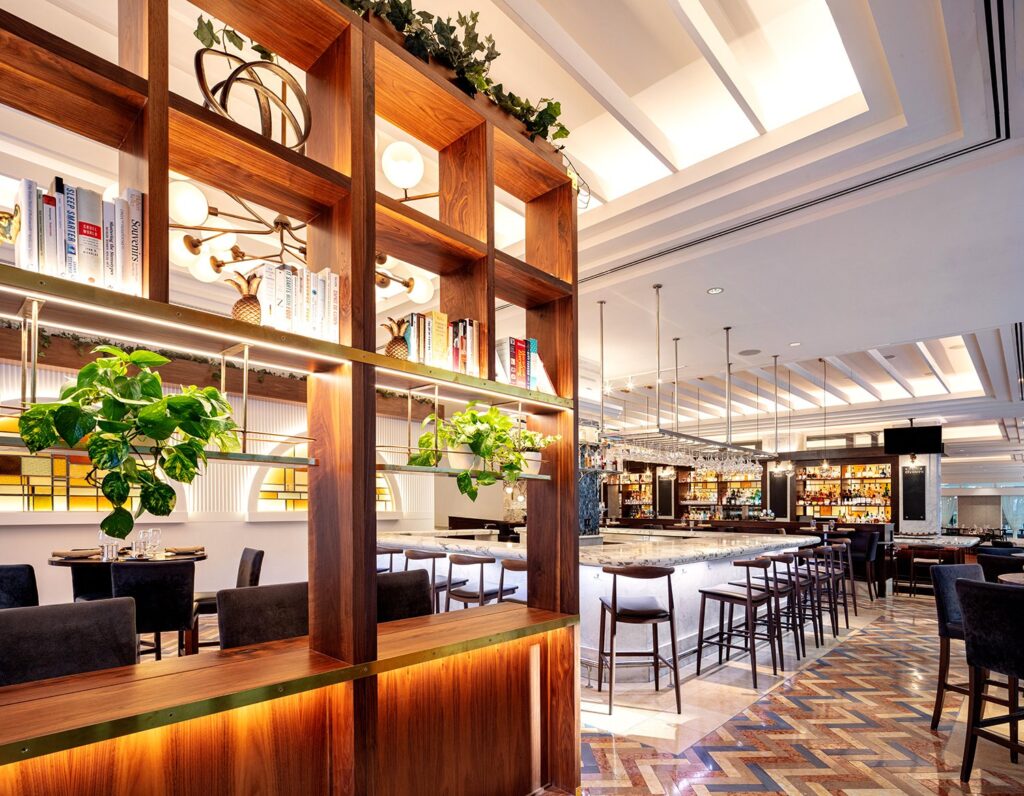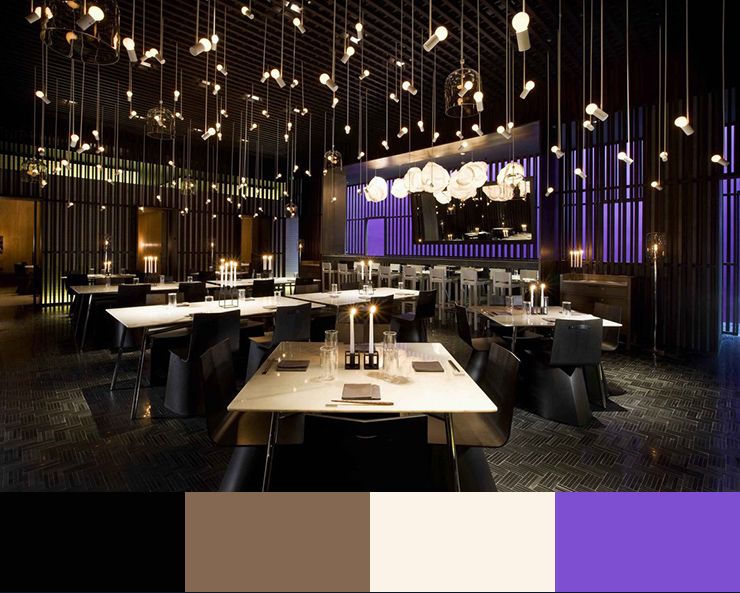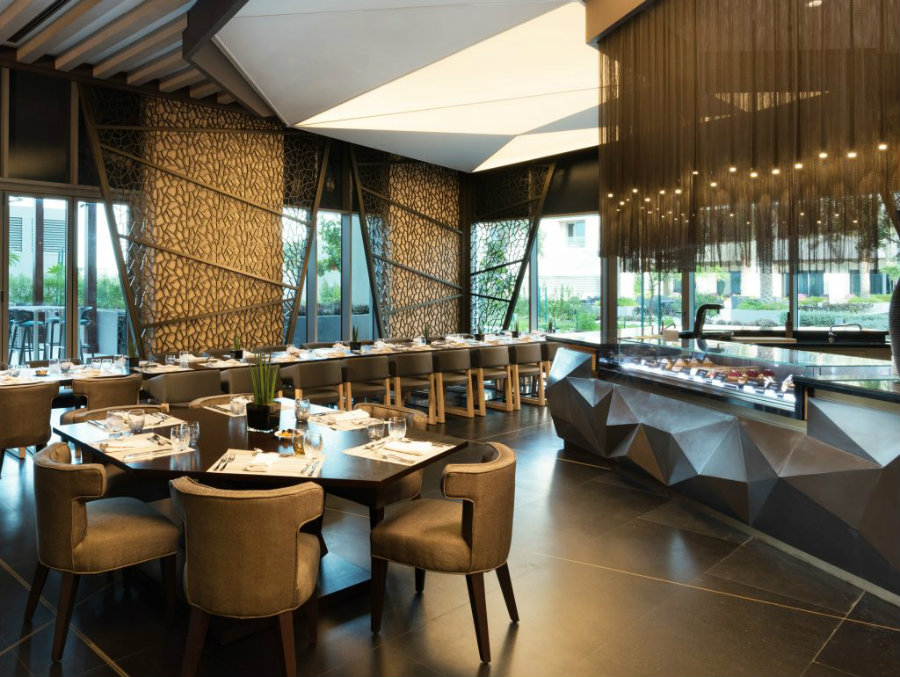13 May, 2022
18 Restaurant Design Tips
As a restaurant owner, a lot of factors come to play to ensure a great customer experience. Given the fact that good food, cleanliness and the accompanying quality service factor heavily but very often the restaurant’s layout is overlooked. Restaurant interior design can impact customers’ psychology to encourage them to come back, order more, and even extend their stay in the restaurant. Factors like seating space, lighting, music, and architecture can all help achieve these goals. In this article, we will help provide some restaurant design tips to help improve the efficiency of your restaurant operations.
Why is Restaurant Design so Important?
Restaurant design can help boost your service by not only bringing about an inviting ambiance as well as help boost your marketing. An enticing décor and layout are the first impressions that customers see when they walk in, this can go a long way in regards to attracting new customers as well as build your brand. An appealing restaurant design will be a great marketing vehicle that you can use on advertisements as well as social media platforms such as Instagram and Facebook.
Important Restaurant Design Tips for Restaurant Owners
Restaurant design can help boost your service by not only bringing about an inviting ambiance as well as help boost your marketing and branding. An enticing restaurant space décor and layout are the first impressions that customers see when they walk in, this can go a long way in regards to attracting new customers as well as build your brand. An appealing restaurant space can be a great marketing vehicle that you can use on advertisements as well as social media platforms such as Instagram and Facebook. Restaurateurs cannot afford to neglect the importance of restaurant design below are some tips that you can use to boost your restaurant’s success.
 1. Make Sure Your Branding Is On Point
1. Make Sure Your Branding Is On Point
Your restaurant design is a crucial part of your branding as it impacts how customers perceive your establishment and decide whether they would consider it a good enough place to eat at. Here you will need to clearly know who you are as a brand. You will need to address three key questions: Who are you as a restaurant?; What promise of service are you giving?; and Why are you doing it? You will need to link your story and branding to how you got started and where you want to go. Your answers to these questions will help set the foundation of your brand and help you to consistently deliver of your promise.
2. Place Your Logo in Perfect Locations
Your logo can act as your unique calling card. As it helps distinguish you from the competition, you should have a logo and colors that represent both your brand and appeal to your customer. You should make sure that your logo is visible in the following areas:
- Your menu
- Websites and blogs.
- Business cards.
- Signage and banners
- Products and packaging
- Letters and emails
- Invoices and forms
- Promotional merchandise such as coupons and gift cards
- Your marketing collateral
3. Make a Good First Impression
Your customers’ opinions of your restaurant will often be formed within the first few moments. This is ample reason for you to make sure that you make a great first impression quickly. For instance, offering in-person hospitality should leave a positive, lasting impression on customers. You should make sure that your guests are received warmly and seated as soon as possible. This helps to set the stage for an incredible dining experience, the moment visitors walk through the door. Patrons should be acknowledged promptly and cordially. You should choose attractive graphics, furnishings, and lighting that matches your brand. You should also make sure that your online interactions through your website or social media are cordial, convenient, and comfortable. Make sure that you provide prompt responses to queries and offer frequent updates on your offerings.
4. Consider Your Exterior Layout
Setting the right tone for your restaurant’s entrance is an important factor in the success of your restaurant. The exterior of your restaurant plays an important role in attracting customers as it provides a visual clue on the type of experience they can expect. In fact, your restaurant’s exterior appeal is something you should consider just as important as the interior, menu, service, and staff. If you want to attract customers to your door, your sign or logo needs to be easy to spot and distinguishable. First, your sign will need to be big enough to be read from across the street.
Walk-in visitors will like to get an inside look at your restaurant. Therefore, it is a good idea to keep your windows free of clutter so potential customers can get a peek at your restaurant to see the food being served and the overall ambiance. You can also consider adding tables to your outdoor area to not only create additional seating but also allow people to enjoy their meal in the fresh air. This type of table seating is great for casual eateries where people like to sit and relax for a while.
5. Present Your Food Properly
You should present your food in a manner that should appeal to all five senses of your customers. Guests should be exposed to the entire eating experience that includes hearing the food being cooked, the smell of the ingredients, enjoy the texture of the meal, and visually taste the food before it hits their tongues.
6. Have a Theme and Color Palette

Your restaurant’s colors should be chosen with care and should be in sync with your restaurant’s theme and concept. This is because themes and colors can impact the psychology of customers, and can make them subconsciously react in many ways ranging from affecting the food choices of customers to the amount of money they spend. Different colors stimulate different emotions and can impact feelings of hunger, thirst, and comfort in people. For example, by using warmer tone colors in your dining area you can make guests feel that the temperature is a couple of degrees higher than usual. While cooler shades can make people think that the temperature is more relaxed.
7. Create a Design Plan
Creating an efficient design plan for your restaurant requires careful consideration of a number of elements. These include addressing issues related to efficient seating and use of space, easy access to key equipment, accommodate traffic-flow pathways for servers and guests, and facilitate deliveries of supplies. When traffic is congested, service and table turnovers slow up resulting in customers feeling cramped and uncomfortable discouraging them from return back.
Restaurant Interior Design Tips
You can use your interior design to better market your restaurant to your customers. Simply put interior design is about creating an unforgettable and comfortable guest experience. It follows rules such as the use of color, rules for seating, lighting, accessibility, restroom requirements, and others. If there is something unique about your interiors people would flock to your restaurant. Most importantly, interior design in restaurants impacts diners’ psychology. You can make your diners order more, eat fast, drink more, and patron your establishment often.
8. Invite Your Location Inside
When patrons talk about a great vibe a restaurant has they are talking about the unique experience they get from the establishment. experience that has been guided by design choices. Essentially it about showcasing the restaurant’s unique characters that can be shown through its seating arrangement; layout; flooring; color; furniture; outdoor seating; decoration on walls; signage and more
9. Consider Lighting Scheme
Lighting is one of the most important facets of restaurant interior design and there are many restaurant lighting ideas you can implement. It determines issues on whether customers can read your menu; whether it accentuates the mood encouraging customer interactions and more. For example, you can use low lighting to create an intimate atmosphere in bars and lounges to encourage intimacy and a laid-back mood. While you can use bright lights to help create a more lively atmosphere, encourage faster behavior, and increase customer turnover.
10. Plan Seating Layout
A seating layout plan is actually a balancing act of maximizing profits while also ensuring customer comfort. A common rule of thumb in regards to square foot per customer is as follows:
- Fine dining: 18-20 square feet
- Full-service restaurant: 12-15 square feet
- Fast-casual: 11-14 square feet
- Fast food: 11-14 square feet
11. Consider Music as an Important Component
Music plays an important role in the dining experience in restaurants. It not only helps set the mood of the dining experience; make waiting more pleasant; and set the tempo of eating. For example, fine dining restaurants will often use classical music or light jazz to complement their dining experience. While fast-food joints will opt for upbeat and fast tunes.
12. Don’t Forget the Restroom Experience
Very often we overlook the issue of restrooms when we run restaurants. Providing a good restroom experience is an important part of customer service and you are required to comply with health and safety guidelines. If your bathrooms are unclean and not managed properly there is little chance that people are going to want to do business with you in the future.
13. Get the Seating Capacity Right
Restaurants’ floor plans are a major component of their concept. They help set the scene for the eating experience, determine the capacity of the restaurants as well as the functionality of the restaurant in terms of circulation and diner’s comfort. Plan your seating plan by considering regulations and seating capacity and choosing the right furniture in terms of size, style, and shape for maximum effect.
14. Assure Proper Ventilation
The preparation of food creates smoke, steam, and odors that can cause discomfort to patrons. Make sure that you invest in a ventilation system that helps prevent discomfort and contribute to temperature control.
15. Choose the Right Fixtures with Attention to Detail
Whether you are running a high-end restaurant or an independent outlet you will need to create a meaningful experience for visitors. your fixtures, fittings, and overall design should be of high quality to get your visitors to have a positive perception of your establishment from the moment they arrive.
16. Look at Partitions
You can look to partitions to offer diners a private space or a split space can be created for reserved parts of the restaurant for an event. You can also use partitions to provide a temporary or semi-permanent room to offer flexibility in terms of design and experiment with floor layouts.
17. Use Props
 To help draw attention or create a conversation starter consider using props on your front window or incorporate art pieces in your décor. You can use plants, optical illusion, sculptures, art pieces, photos, or memorabilia to spruce up your establishment’s décor.
To help draw attention or create a conversation starter consider using props on your front window or incorporate art pieces in your décor. You can use plants, optical illusion, sculptures, art pieces, photos, or memorabilia to spruce up your establishment’s décor.
18. Design Kitchen Layout for Excellent Customer Service
Though the kitchen is the least visited area in the restaurant by diners, it is probably the biggest investment of money in the design of a restaurant. This is because kitchens come with bulky, expensive equipment if your kitchen design is not carefully designed that might lead to delays in service as well as suboptimum productivity. Also, an important consideration is safety, make sure that the layout of the restaurant kitchen includes enough space between the different workstations to prevent accidents.
8 Fantastic Restaurant Interior Design Ideas from Around the World
- Le Coucou, New York City
- Villon Restaurant and Bar, San Francisco
- Dija Mara, San Diego
- Proxi, Chicago
- Juvia, Miami, Florida
- La Peg, Philadelphia
- GIULIETTA, Toronto, Canada
- Ultraviolet, Shanghai, China
Outsourcing Restaurant Design to an Architect or Designers
If you are unsure of what your ideal restaurant design should be you can seek the help of architects, contractors, or interior designers to help you decide on which route to go design-wise.
How can I make my restaurant stylish?
- Decide on the concept, style, and theme
- Choose color, tabletops, and décor wisely
- Focus on your restaurant design layout
- Use light and music to create an atmosphere
- Don’t forget about restrooms, ventilation and cooling systems HVAC
- Always take into account your customers’ needs and expectations
What is the layout of a restaurant?
Irrespective of the type, size, or location- every restaurant has a basic layout that comprises an entrance, kitchen, dining room, and restrooms. You can design your restaurant based on your particular brand and needs. This is in addition to the ambiance you are aiming to achieve as well as the number of people you want to cater to at one particular time.
What makes a good restaurant layout?
A good restaurant layout should bring together good food, service, and great experiences. Ideally, it should include:
- It is designed with your brand personality in mind this includes aesthetics, lighting, and décor
- Balances your seating capacity with good ambiance
- Offers patrons comfort in terms of seating, table,
- Should have ample ventilation and air conditioning
- Clean and well-stocked bathrooms
How do you design a restaurant interior?
You should design your restaurant interior based on your brand, which agrees with the functional needs of customers as well as deliver on aesthetics. Here a good décor and architecture can help you achieve this. Remember the goal is to enrich guests’ experiences and memorable enough for them to keep coming back.
